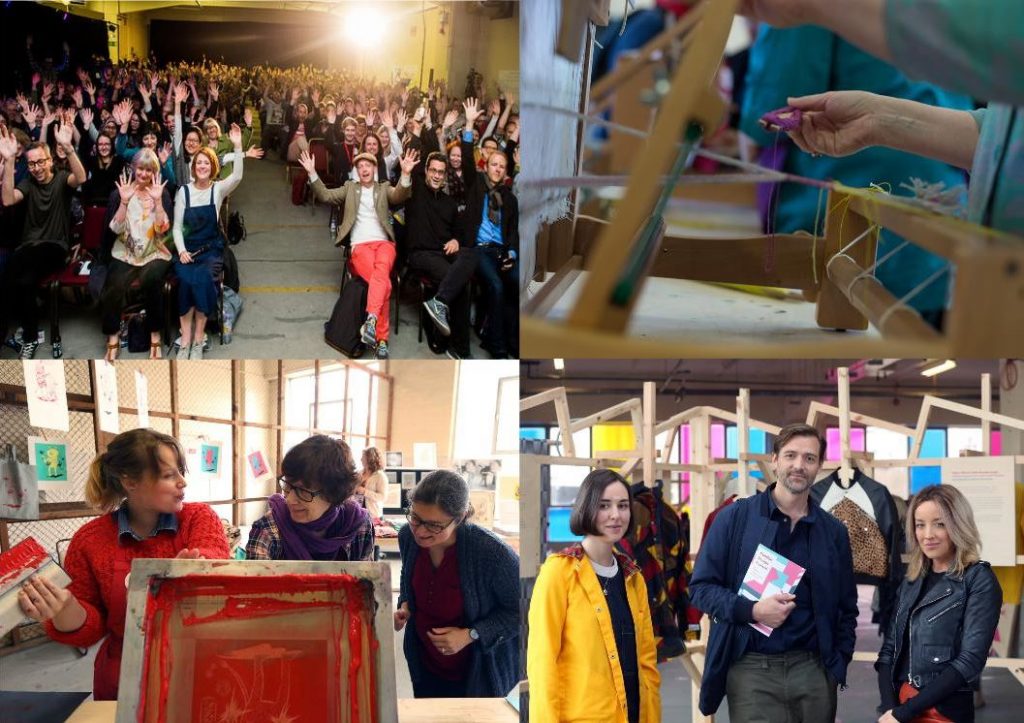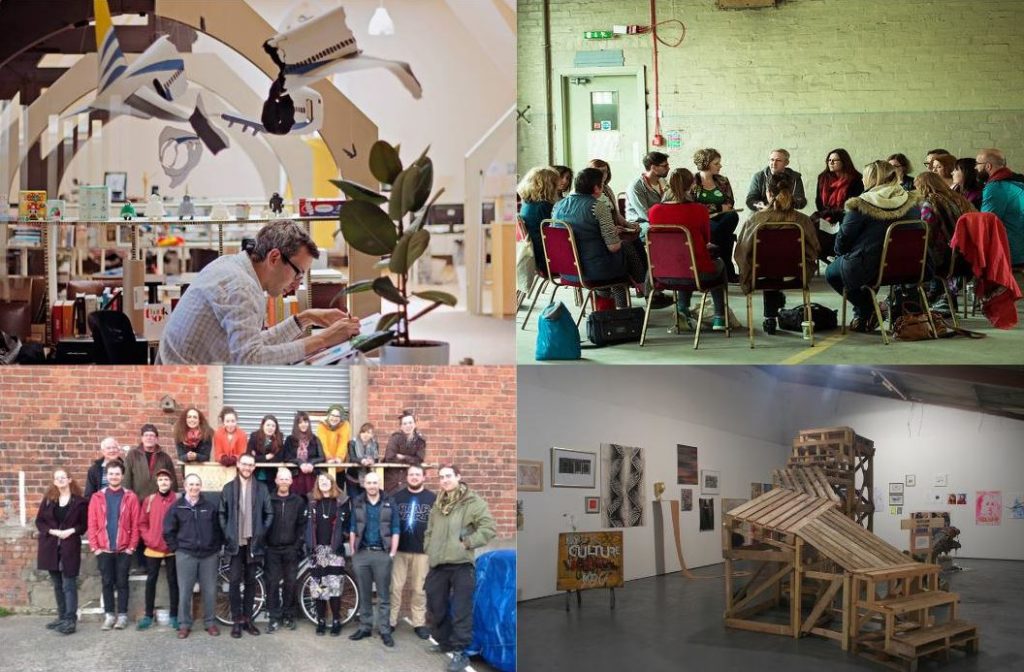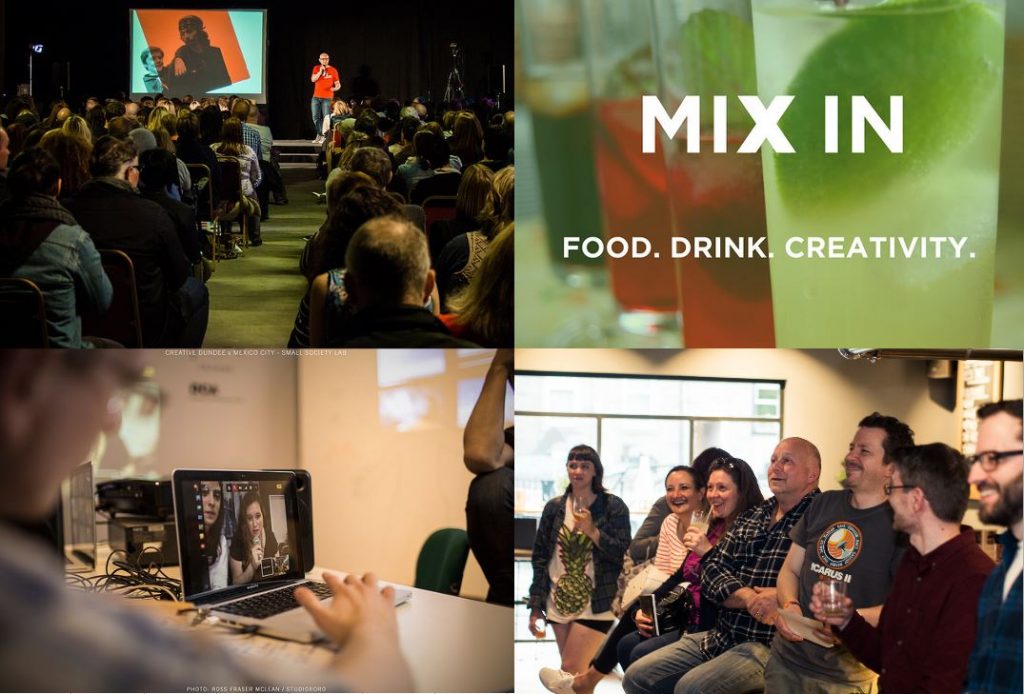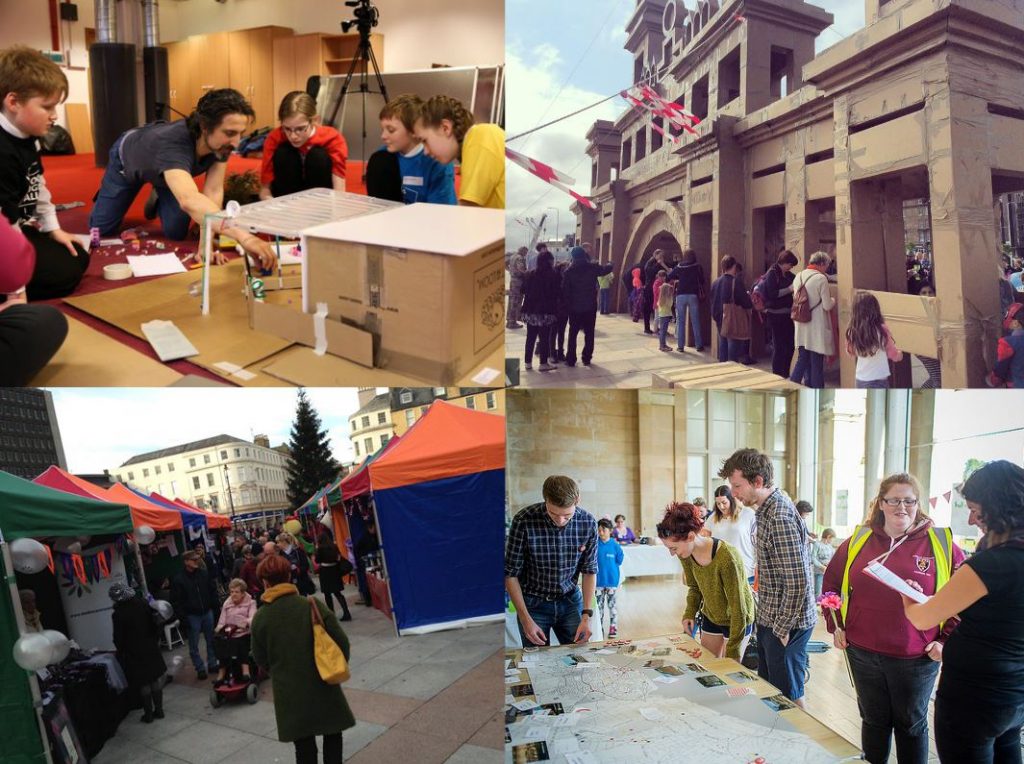
Fabric Dundee, which helped form Dundee’s first Creative Industries Strategy has been relaunched into a creative leadership programme for the city in December 2018 – Read more about Fabric.
We invited a group of people representing some of the many creative disciplines which make up Dundee’s impressive scene to come together to share ideas, inspirations and experiences. You can read more about the initial discussions here which focused on the challenges and opportunities for the city’s creative sector.
The second session focused on what success will look like for the creative sector of the city in 2020. What can we expect in four years time? V&A Dundee Museum of Design will have been open for two years, the city will have built on its UNESCO City of Design title and Dundee Design Festival will possibly have run its third edition. The city will then be receiving much more creative attention than today and attracting more visitors as well. For the city’s creative sector, this will translate into more opportunities to grow international markets as well as collaborate and work in innovative ways.
We asked the following questions to the group in order to facilitate the discussions.
How can we tell our story, share our values and our ways of working with the world?
Taking inspiration from existing online apps like Tripadvisor, Pinterest, LinkedIn or Periscope where people can find so much information about places to visit and things to do, the discussion group talked about the potential of developing a digital platform to facilitate and encourage tourism in the city.
Its dynamic would be similar to the business tourism model, where income for creatives and corporate objectives can be met in an interesting and relaxed way. This platform would offer insights for both cultural tourism (sightseeing, hotels, restaurants, museums and independent galleries) and creative tourism (places and events to discover and connect with the city’s creative community).
It would feature not only places to stay, visit, eat, but also transport, image based directory for businesses including hyperlinks. Citizens and visitors would be able to rate these using star system and geolocation. The offers would also include tours, gifts, classes and training, expertise, bespoke design, collaboration, clients, etc. – categorised by sectors (commercial, not-for-profit, public, health, education etc.) and with different layers of content (styles, themes, content etc.).
The app would be used to live stream events with potential for hosting international events in Dundee, and to better share how the city’s creative sector is working through live streaming Pecha Kucha events for example or live chats showing authenticity of the sector.
The idea of serendipity, aptitude for making desirable discoveries by accident, was also mentioned by the group, through using this platform as a label of quality for an extended creative tourism. This could be used for connecting creative people living in the city together as well as with those living outside the city.

How can we experiment with new ways of accessing and using spaces?
The discussion group acknowledged a culture of flexibility in the city. Taking a holistic and flexible approach toward facilitating mutual growth and success, sharing a common language, developing temporary and flexible work spaces and creating mini-examples of good practices that can be replicated and scaled-up, they then developed the following list of advice that could help when trying to open doors.
1 Just ask! If you push doors, they’ll open easier than you think.
2 Make short term plans to avoid the pressure of having a business plan, but instead just have a go and that’s ok if it doesn’t work!
3 Find times and spaces to experiment and fail. Revise our definitions of success.
4 Generate different values of exchange, for example when paying a rent.
5 Share space, practice and information. Team up with other creative practices to avoid the under-use of spaces. Create open source ideas and learning.
6 Take inspiration from membership models and from groups that share interests and goals, with clear expectations and opportunities, a flat hierarchy, and a small fee to get access to space and collective.
7 Be more transparent and make competition or the fear of competition redundant.
8 Build on better relationships with the large organisations. For example, larger organisations can potentially put their branding and some resources (time, expertise, spaces etc.) to assist smaller organisations and emerging projects.
9 Develop “support acts”, creative trips and festivals with more than a tokenistic engagement programme. For examples, take property developers on creative visits to show them other models of working and what the creative sector is doing and think about how they could take part and help, or organise creative field visits between spaces, practices and for students; outreach work (Highlands, etc.).

How can we better connect and collaborate within the creative community?
The group discussed the necessity sometimes to change the culture of organisations, to help large and small industries understand the values of connecting, building a network and collaborating with each others, that “being connected is positive”. We need a better understanding of the values of connecting with more diverse networks, with different fields, sectors – go outside our comfort zone and have a look at what the others are doing.
But how do we promote, encourage and facilitate connectivity? How can we share a common language that would allow us to appreciate the mutual benefits of connecting. How do we know where to look for and understand who is doing what? The opportunities to connect need to be more visible, accessible and easier to grasp. Informal creative focus events are great catalysers, but we shouldn’t underestimate the effectiveness of those individuals who have the local knowledge and ability to connect people together – to connect with others is a skill/attitude that we can develop.
We need safe, comfortable, social (and fun) environment, co-working spaces, temporary spaces to collaborate and develop large-scale work, and to keep it organic, let people connect their own way, nothing is worse than a formal networking event! Once we’re connected, we should share our networks and let people in. A great thing about feeling part of a network is this sense of belonging, but we need to be careful at making new people welcome into our tribes. Let’s not forget that, more than a business connection, it’s a human experience first, we need the guaranty of a certain quality of interaction, trust is key – people connect with people to create business networks.
Then, we also need to take time to connect and find the resources to do it. Strengthening connections is a way to encourage people to stay and work in the city. For example by creating stronger connections between students and the city’s creative sector. For the city to retain and attract creative talent, opportunities should be much more obvious to all years of students – by opening up more informed opportunities to work with companies as a student – like a hack day or week – and local creative businesses and practitioners should be encouraged and supported to take on interns.
And most of all, we should continue to make our own fun. Working on side projects as a student, with real life challenges and in collaboration with creative-driven people, should be generally encouraged by the Universities and welcome by the local creative sector.

How can we develop a nurturing environment for emerging creative businesses/practitioners?
The group discussed on what to do for everyone is working better together.
1 More collaboration between Universities and the city’s creative industries. Students need to be encouraged to get out of Universities’s ground, Universities need to be looking towards future and perhaps start to invest in shared space off campus. Postgraduates should have a good idea of the creative landscape of the city.
2 More networking events. We need to be encouraged more and supported to attend those kind of events.
3 More openness. We shouldn’t be scared of competition. Established businesses should support new businesses, share their skills and business expertise. When setting up a business, graduates need more knowledge about budgets and how to make a brief about what they do. All will benefit from it – the quantity and quality of choices we will be able to offer will attract a bigger market!
How can we better understand and connect outwith the creative community?
The discussion group focused on the necessity to connect with the broader community of Dundee, and understand how culture and creativity empower people to solve their own problems, why they are linchpins of our society.
There should be no barriers, this should be partitionary, no ‘us and them’. The city’s creative sector has the expertise and the city is small enough to make connections easier. We could change the way we network and work to engage more with the local community, because we are currently city-centric, we’re ghettoising and need to expand from the waterfront, be brave and risky, get out and about. We need spread it out and share aspirations.
We also have to look around, find what works out elsewhere and adapt it here. One year ahead, we should start piloting small, pop-up projects that have the potential for remarkable impacts, such as people-led healthcare for better health outcomes, community development for increased confidence, social enterprise development, education and training, cultural projects and co-programme of creative activities and festivals, time bank by cultural agencies (eg. larger organisations would give time and expertise back to the community).

How can we better attract and connect with markets/audiences?
Although Dundee is already working at an international level, it’s not visible to everyone. We need to upscale our markets/audience to Scotland and find ways to work closer to the rest of the country for export, to associate Scottish/Scotland design with quality. Themed years and national initiatives should profile, promote and celebrate Dundee/Scottish design on the international stage, like for example the Venice Biennale, London Design Festival, Milan Design Week etc. What can we as a city do in 2020 for example, which has national and international impact?
We need to make a better use of national and international profiles and partners, such as the UK’s only UNESCO City of Design, the connections with British Council or the Festival and museum networks etc. and to be present at international trades, conferences, showcases etc. We also could expand (in)formally our peer group model and build country-wide supportive networks where it’s ok to ask questions.
We should capitalise on individual’s energy to show their work internationally and place ourselves at the international level with confidence. We need to pull talent together and put ourselves on the radar, then the magic will happen.
The group ended the session thinking about how to bolster what already exists, the following questions were raised, which we’ll be exploring more over the next few weeks. As always we are keen to hear your thoughts and responses to the issues highlighted. Do drop Claire a line with your ideas: claire@creativedundee.com
But, how to support local projects to be visible on the international level? Could a big organisation, for example DCA, UNESCO City of Design, Creative Dundee, put their marketing force and branding behind local projects to make them part of something bigger? Are there too many partners/logos this way? How do we come together as a group and get that voice? What would be the message behind a shared partnership? How do we demonstrate to the outside world that we work together, share values etc?